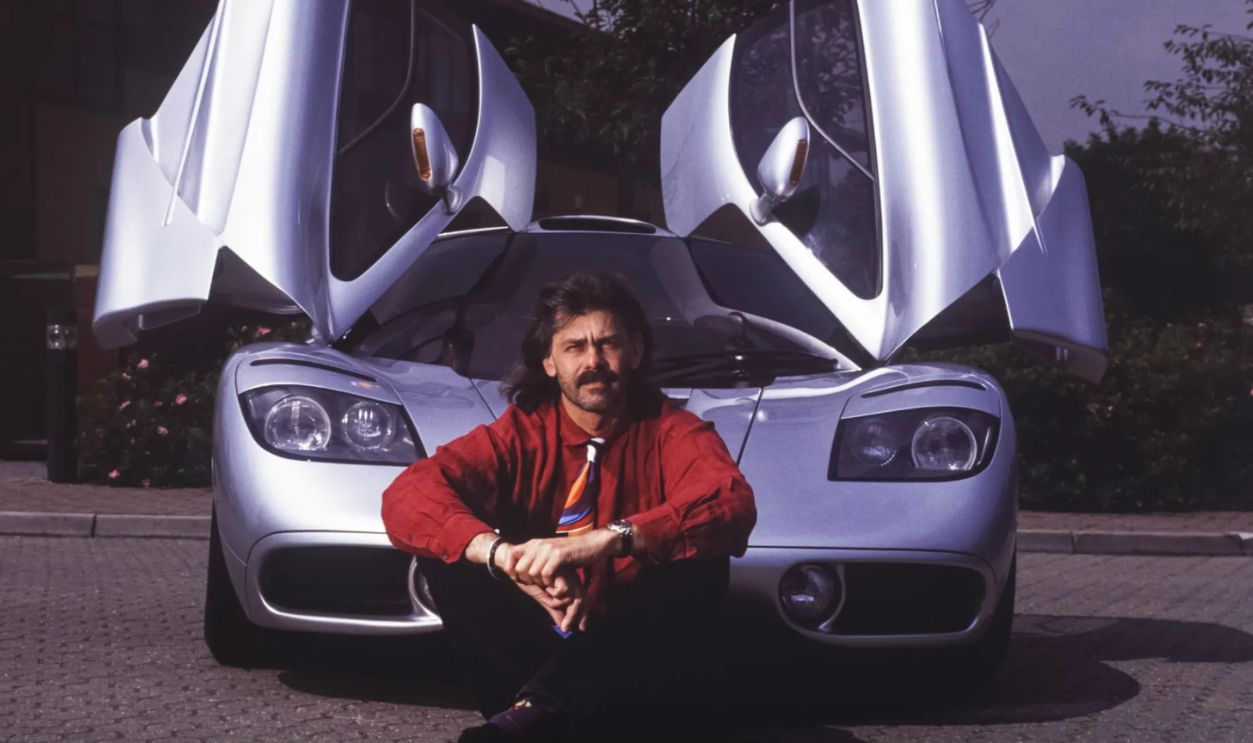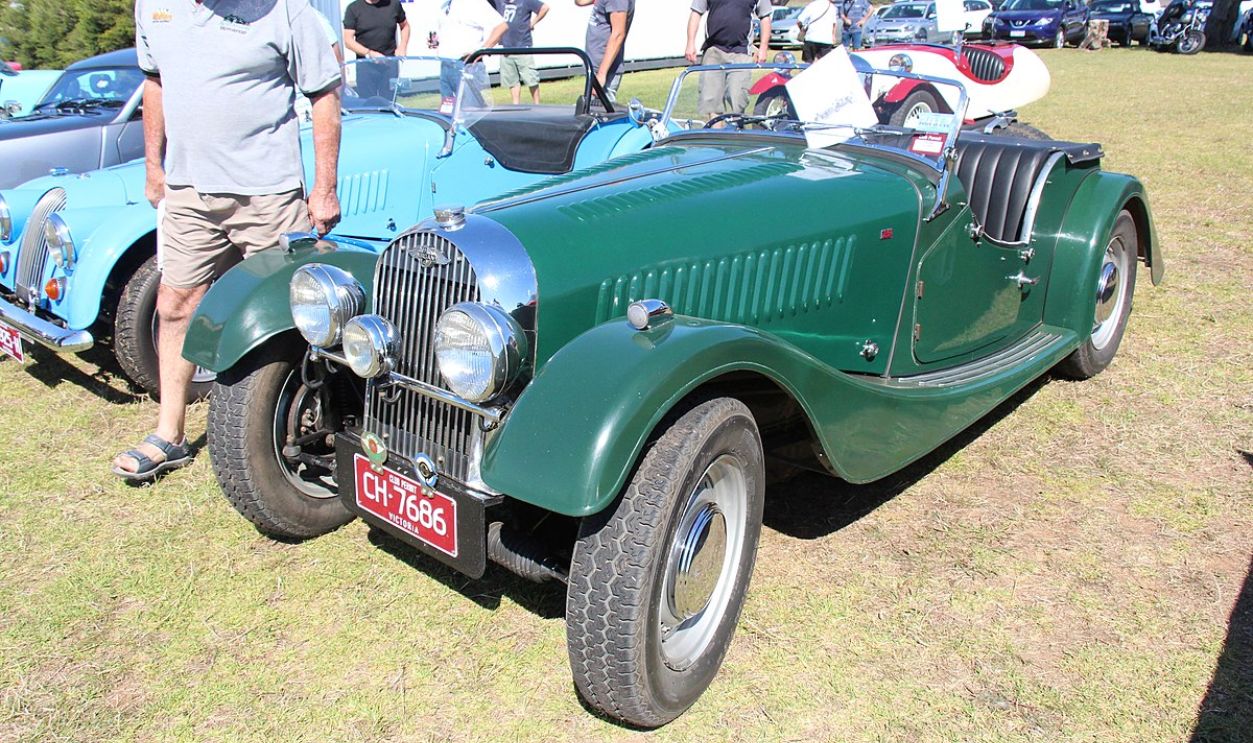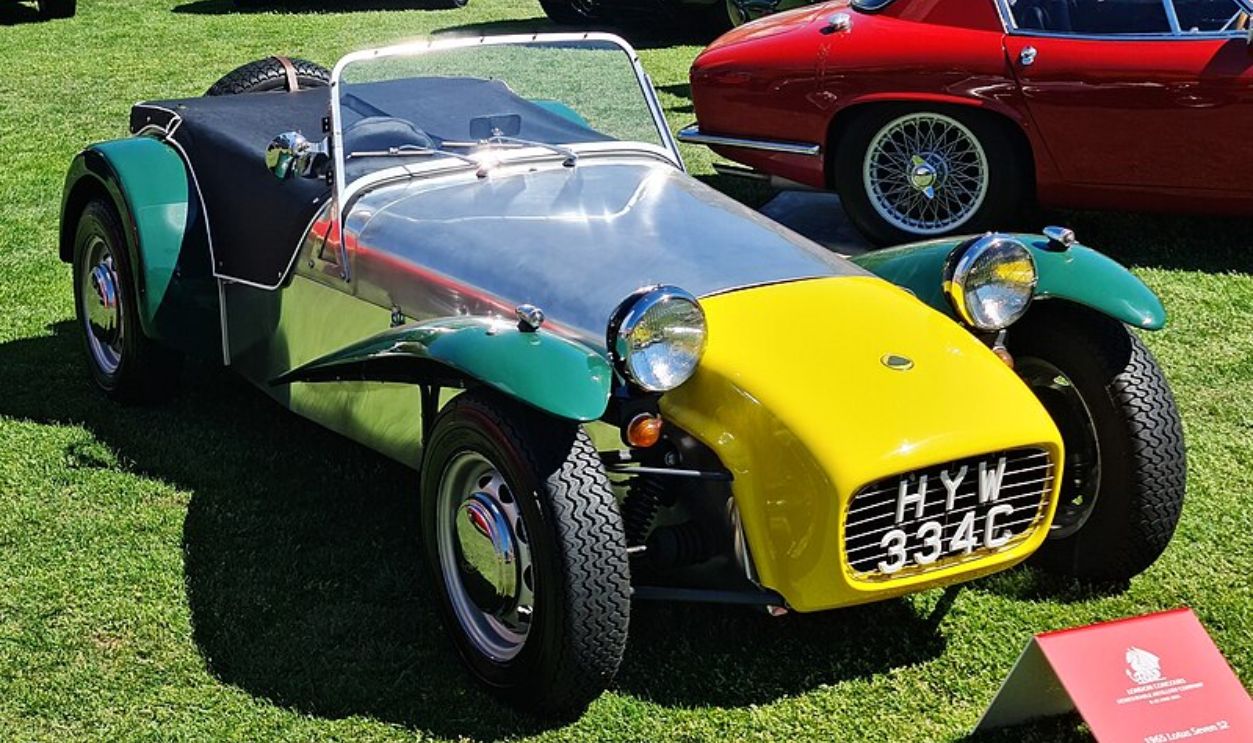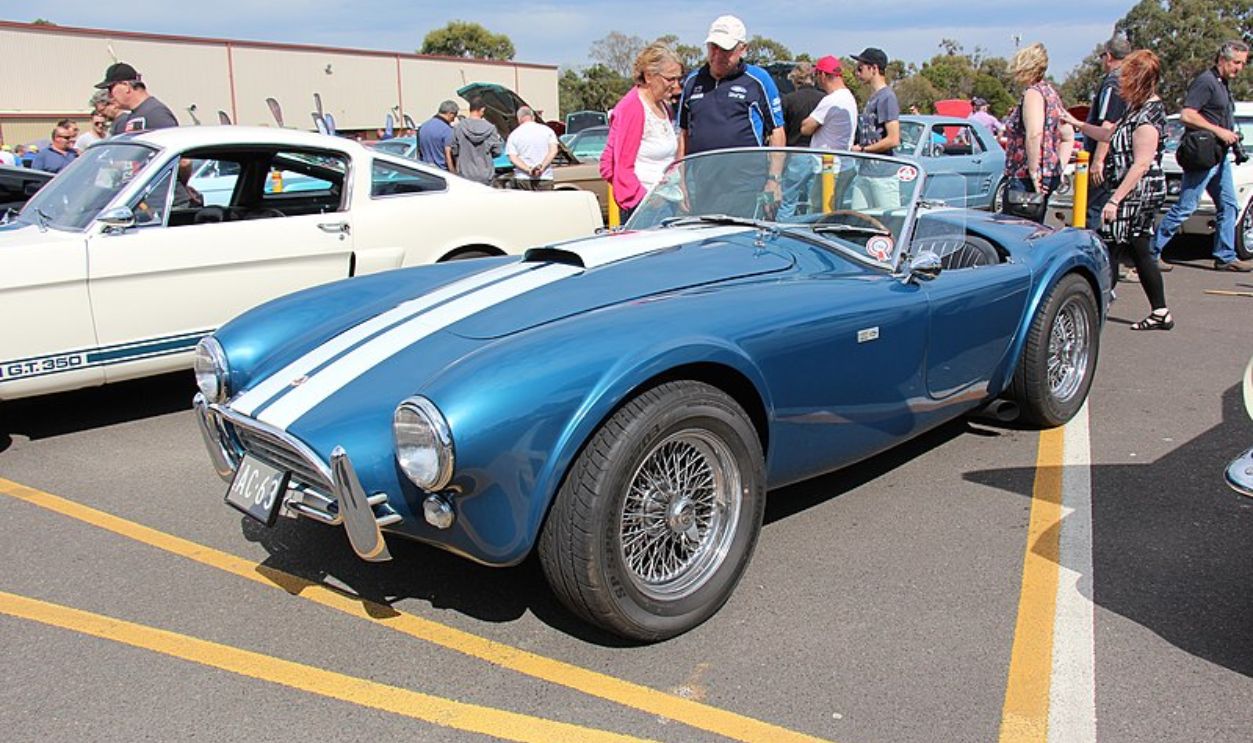Speed Kingdom
Besides the posh accents and afternoon tea, Britain's automotive rebels have built high-performance four-wheelers. Even though the world expected gentlemanly restraint, these 14 cars undoubtedly turned roads into race circuits.

Aston Martin DB5 (1963–1965)
With a production run of just 1,059 units, this car has made its place in automotive history and popular culture, particularly as the vehicle of choice for James Bond in the film Goldfinger. Under the hood, the DB5 showcases a 4.0-liter inline-six engine.
 Vauxford, CC BY-SA 4.0, Wikimedia Commons
Vauxford, CC BY-SA 4.0, Wikimedia Commons
Aston Martin DB5 (1963–1965) (Cont.)
It delivered between 282 and 325 horsepower, based on the variant. This engine configuration permits the car to achieve a top speed of around 145 mph (233 km/h) and speed up to 60 mph in about 8 seconds.
 DestinationFearFan, CC BY-SA 4.0, Wikimedia Commons
DestinationFearFan, CC BY-SA 4.0, Wikimedia Commons
Jaguar E-Type (1961–1975)
The beloved E-Type was first introduced with a 3.8-liter inline-six engine, which was later upgraded to a 4.2-liter version and eventually a more potent 5.3-liter V12 in the Series 3 models. Performance-wise, the Jaguar E-Type was remarkable for its era.
 Greg Gjerdingen from Willmar, USA, CC BY 2.0, Wikimedia Commons
Greg Gjerdingen from Willmar, USA, CC BY 2.0, Wikimedia Commons
Jaguar E-Type (1961–1975) (Cont.)
Early Series 1 versions had a top speed of about 150 mph and could reach 60 mph in about 6.7 seconds. While the Series 3 with the V12 engine provided ratings of up to 276 horsepower and 304 lb-ft of torque, the Series 2 continued to perform similarly.
 DeFacto, CC BY-SA 4.0, Wikimedia Commons
DeFacto, CC BY-SA 4.0, Wikimedia Commons
McLaren F1 (1992–1998)
This vehicle measures 168.8 inches (4287 mm) in length, 71.6 inches (1820 mm) in width, and 44.9 inches (1140 mm) in height, with a wheelbase of 107.0 inches (2718 mm). The F1 utilizes a double-wishbone suspension system at both the front and rear.
 Chelsea Jay, CC BY-SA 4.0, Wikimedia Commons
Chelsea Jay, CC BY-SA 4.0, Wikimedia Commons
McLaren F1 (1992–1998) (Cont.)
At the center of the McLaren F1 is a naturally aspirated 6.1-liter V12 engine developed by BMW Motorsports. It pumps out around 627 horsepower at 7,400 rpm. This engine breaks the 100 horsepower-per-liter barrier and offers fantastic responsiveness.
 robad0b, CC BY-SA 2.0, Wikimedia Commons
robad0b, CC BY-SA 2.0, Wikimedia Commons
Lotus Elise (1996–present)
Produced since 1996, here comes a lightweight, agile sports car. The Elise is driven by a mid-mounted 1.8-liter four-cylinder engine. In the latest models, such as the Elise Sport 240 Final Edition, this engine produces 240 horsepower and 244 Nm of torque.
 Lothar Spurzem, CC BY-SA 2.0, Wikimedia Commons
Lothar Spurzem, CC BY-SA 2.0, Wikimedia Commons
Lotus Elise (1996–present) (Cont.)
Hence, the car can race from 0 to 60 mph in just 4.1 seconds. Its top speed would be around 147 mph (237 km/h). Thanks to its aluminum chassis and composite fiberglass body, the car weighs around 876 kg (1,932 lbs).
Austin-Healey 3000 (1959–1967)
This one was designed as a more powerful successor to the Austin-Healey 100/6 and became one of the most legendary models in the "Big Healey" lineup. The 3000 was driven by a 2.9-liter inline-six engine that was better compared to its predecessors.
 SG2012, CC BY 2.0, Wikimedia Commons
SG2012, CC BY 2.0, Wikimedia Commons
Austin-Healey 3000 (1959–1967) (Cont.)
Around 124 horsepower was produced by the first Mk I iteration, but power output increased with each new model, reaching 148 horsepower with the Mk III. This increase allowed the automobile to accelerate up to 60 mph in under 10 seconds.
 Arpingstone, Wikimedia Commons
Arpingstone, Wikimedia Commons
Triumph Spitfire (1962–1980)
The Spitfire brought us decent fuel consumption figures, averaging around 28-32 mpg, depending on the model and driving conditions. Produced from 1962 to 1980, this beast was originally designed by Giovanni Michelotti with lightweight construction.
 Avaldia, CC BY-SA 3.0, Wikimedia Commons
Avaldia, CC BY-SA 3.0, Wikimedia Commons
Triumph Spitfire (1962–1980) (Cont.)
Throughout its manufacturing history, the Spitfire was propelled by several four-cylinder engines. The first models came with a 1.1-liter engine that produced 63 horsepower. However, as time went on, later versions, like the Spitfire 1500, got bumped up to a bigger 1.5-liter engine.
 SG2012, CC BY 2.0, Wikimedia Commons
SG2012, CC BY 2.0, Wikimedia Commons
Morgan Plus 4 (1950–1961)
The Plus 4, an improvement on the previous Morgan 4/4, was made to have greater power and a sportier driving experience. Over the course of its manufacturing run, this car had many upgrades, starting with a 2.0-liter inline-four engine that generated 90 horsepower.
 Charles01, CC BY-SA 3.0, Wikimedia Commons
Charles01, CC BY-SA 3.0, Wikimedia Commons
Morgan Plus 4 (1950–1961) (Cont.)
By the end of its era, it brought more substantial engine options that could produce up to 115 horsepower. The 1950–1961 production of the Morgan Plus 4 was first formally introduced at the Earl's Court Motor Show in 1950.
 Sicnag, CC BY 2.0, Wikimedia Commons
Sicnag, CC BY 2.0, Wikimedia Commons
TVR Griffith (1991–2002)
Two engine options were first available for the Griffith: a 4.0-liter V8 that produced 240 horsepower and a 4.3-liter V8 that pumped out 280 horsepower. A more powerful 5.0-liter model with about 340 horsepower and 350 lb-ft of torque was then released in 1993.
 The Car Spy, CC BY 2.0, Wikimedia Commons
The Car Spy, CC BY 2.0, Wikimedia Commons
MG TC (1945–1949)
In terms of suspension and handling, half-elliptic springs were used in the front and rear suspension systems of the MG TC. A beam axle with leaf springs made up the front suspension, while a live axle arrangement was used for the rear.
 sv1ambo, CC BY 2.0, Wikimedia Commons
sv1ambo, CC BY 2.0, Wikimedia Commons
MG TC (1945–1949) (Cont.)
The MG TC's tall hood, rounded fenders, and wire-spoke wheels were characteristics of its traditional British roadster style. This beast’s engine, a 1.3-liter (1,250 cc) inline-four engine, drove the MG TC, pumping out roughly 54.4 horsepower at 5,200 rpm.
 dave_7, CC BY 2.0, Wikimedia Commons
dave_7, CC BY 2.0, Wikimedia Commons
Aston Martin V12 Vantage (2009–2013)
The 5.9-liter V12 engine that runs the Aston Martin V12 Vantage emits about 510 horsepower and 420 lb-ft of torque. The car could reach nearly 190 mph with this power, and it could race to 60 mph in only 4.2 seconds.
 Jeremy from Sydney, Australia, CC BY 2.0, Wikimedia Commons
Jeremy from Sydney, Australia, CC BY 2.0, Wikimedia Commons
Aston Martin V12 Vantage (2009–2013) (Cont.)
The engine came paired with a six-speed manual transmission or an optional automated manual gearbox. Additionally, the car’s exterior included aggressive front air intakes, a sculpted hood, and larger rear diffusers for its aerodynamic efficiency.
 Alexandre Prévot from Nancy, France, CC BY-SA 2.0, Wikimedia Commons
Alexandre Prévot from Nancy, France, CC BY-SA 2.0, Wikimedia Commons
Jaguar XK120 (1948–1954)
Launched as a prototype at the 1948 London Motor Show, the XK120 was powered by a 3.4-liter inline-six engine. It could give out around 160 horsepower and 195 lb-ft of torque, featuring dual SU carburetors and a compression ratio of 8.0:1.
 Calreyn88, CC BY-SA 4.0, Wikimedia Commons
Calreyn88, CC BY-SA 4.0, Wikimedia Commons
Jaguar XK120 (1948–1954) (Cont.)
It was available in three body styles: roadster, fixed coupe, and drophead coupe. Besides, the XK120 possessed an independent front suspension with torsion bars and a rear suspension that made use of semi-elliptic leaf springs.
 Greg Gjerdingen from Willmar, USA, CC BY 2.0, Wikimedia Commons
Greg Gjerdingen from Willmar, USA, CC BY 2.0, Wikimedia Commons
Bentley Blower (1927–1931)
W.O. Bentley oversaw the development of the Blower, which was intended for motorsport competition. It ended up making a big impression at the 24 Hours of Le Mans, as it could literally accelerate up to 130 mph. The car weighed around 1,930 kg.
 Sfoskett, CC BY-SA 3.0, Wikimedia Commons
Sfoskett, CC BY-SA 3.0, Wikimedia Commons
Lotus 7 (1957–1972)
Designed by Colin Chapman, the founder of Lotus Cars, the 7 was built to mirror the philosophy of "performance through lightness”. The body was made from aluminum panels, contributing to its lightweight nature. Many models weighed around 569 kg (1,254 lbs).
 MrWalkr, CC BY-SA 4.0, Wikimedia Commons
MrWalkr, CC BY-SA 4.0, Wikimedia Commons
Lotus 7 (1957–1972) (Cont.)
Early models of this car came in with a 1.2-liter engine that produced around 40 horsepower, while later versions featured larger engines. These included the popular 1.6-liter variant that could deliver up to 115 horsepower.
 Brian Snelson from Hockley, Essex, England, CC BY 2.0, Wikimedia Commons
Brian Snelson from Hockley, Essex, England, CC BY 2.0, Wikimedia Commons
AC Cobra (1962–1967)
The AC Cobra was developed through a collaboration between AC Cars and Carroll Shelby. It had an all-hood and wide fenders, which concealed its huge tires. The vehicle also had an independent front suspension system and a live rear axle setup with leaf springs.
 Sicnag, CC BY 2.0, Wikimedia Commons
Sicnag, CC BY 2.0, Wikimedia Commons








